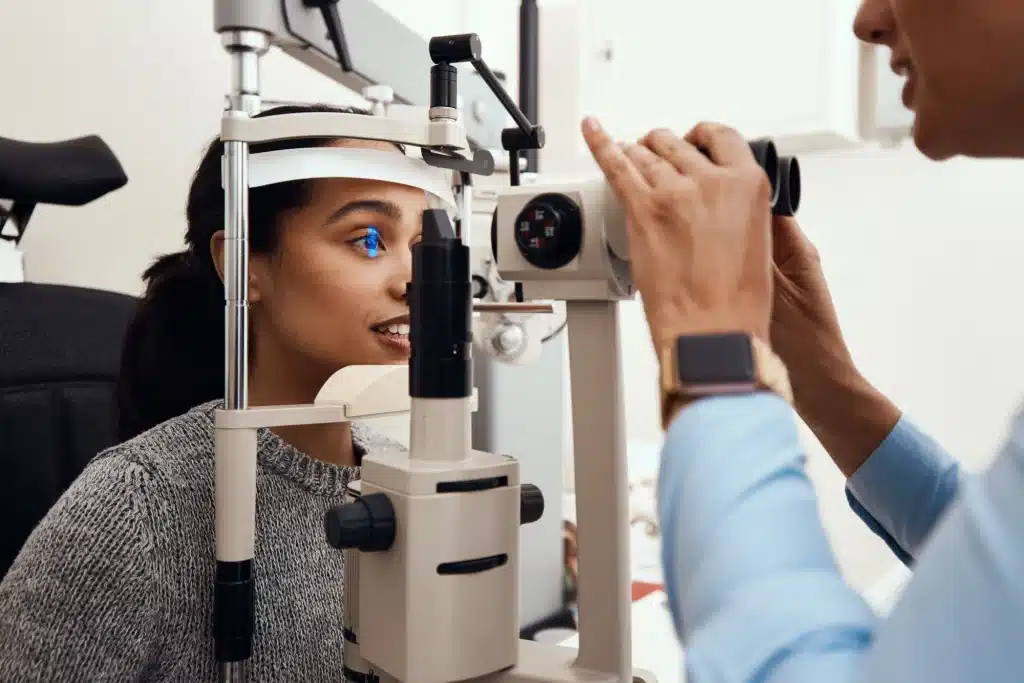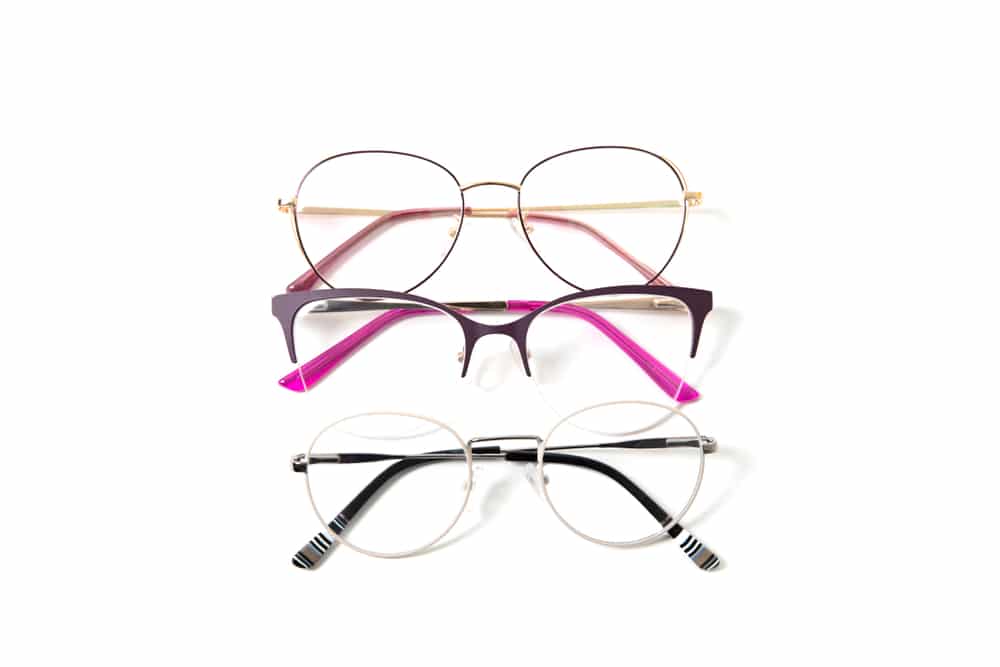Medically Reviewed by:
February is Age-related Macular Degeneration (AMD) Awareness Month
Macular degeneration is a progressive eye condition affecting as many as 15 million Americans and millions more around the world. The disease attacks the macula of the eye, where our sharpest central vision occurs. Although it rarely results in complete blindness, it robs the individual of all but the outermost, peripheral vision, leaving only dim images or black holes at the center of vision.
AMD is the leading cause of severe vision loss in adults over the age 50. Although anyone can get AMD, caucasians are at higher risk than other races and women tend to develop AMD at an earlier age than men. There are several other risk factors for the onset of Age-related Macular Degeneration:
- Smoking
- Obesity
- High blood pressure
- High cholesterol
In the early stages, AMD doesn’t have any symptoms. However, there are complications that a patient should be aware of that become noticeable as the condition progresses. These include:
- Straight lines begin to appear out of shape
- Dark or white blurry areas appear in the center of vision
- Change or decline color perception
With no cure for Age-related Macular Degeneration, the best defense against the eye disease is early detection. As always, it is important for eye care patients to get annual comprehensive eye exams.
Related Articles
Medically Reviewed by:
Macular Degeneration and the Amsler Grid
Macular degeneration (AMD) is a chronic eye disease associated with aging that gradually destroys central vision. It is one of the leading causes of legal blindness and vision impairment in older Americans. AMD affects central vision, but not peripheral vision – therefore, it doesn’t cause total blindness. The progression of AMD can be slow or rapid, but the deterioration of central vision generally occurs over a period of a few years.
There are two types of AMD, dry and wet. The dry form occurs in approximately 90 percent of those with AMD. The wet form only occurs in 10 percent of those with AMD, but it accounts for 90 percent of all severe vision loss from the disease. “Wet” is a chronic condition with no cure, but it can be treated with photodynamic therapy (PDT), conventional laser, and anti – VEGF medication treatments, or combination therapies.
Like other chronic diseases, wet AMD requires that people with the condition take an active role in monitoring their symptoms. The Amsler grid is a safe and simple, self-administered screening test used to evaluate possible problem areas in the macular.
Test each eye separately. Cover the eye that you are not using · Keep the grid about 14 inches away · Look directly at the dot in the center of the grid · If you normally wear glasses, do so while looking at the grid
Repeat this test on your other eye. If you notice blurry or wavy lines, and dark or blank spots you may have a vision problem in the eye and you should call your eye doctor.
Early detection and treatment are the best defense of losing your vision.
Related Articles
Medically Reviewed by:
Macular Degeneration (AMD)
Macular Degeneration (AMD) is a chronic eye disease associated with aging that gradually destroys central vision. Itʼs one of the leading causes of legal blindness and vision impairment in older Americans. AMD affects central vision, but not peripheral vision – therefore, it doesn’t cause total blindness. The progression of AMD can be slow or rapid, but the deterioration of central vision generally occurs over a period of a few years. Pain is not associated with AMD, but if you experience any of the following conditions make an eye appointment right away:
- Straight lines appear wavy
- Difficulty seeing at a distance
- Decreased ability to distinguish colors
- Inability to see details, such as faces or words in a book
- Dark or empty spots block the center of your vision
Although the exact cause of Macular Degeneration is unknown, several studies have shown the following are more at risk:
- People age 50 and older
- People with hypertension
- People who smoke
- People with a family history of AMD
There are two types of AMD: “dry” and “wet”: The “dry” form of Macular Degeneration occurs in approximately 90 percent of those with AMD. Studies have found that high levels of zinc and antioxidants play a key role in slowing the few specific forms of “wet” macular degeneration.
Early detection and treatment are the best defense against losing your vision.
Related Articles
Financing Options Available
Apply today to find a financing option that meets your needs.
Our Locations
Houston/Bellaire
6565 W. Loop S., Suite 650Bellaire, TX 77401
Medical Office:
713-797-1010
Medical Fax:
713-357-7276
LASIK/Near Vision:
Office: 713-395-1515
Fax: 713-357-7278
Pasadena
4415 Crenshaw RoadPasadena, TX 77504
Medical Office:
281-977-8800
Medical Fax:
281-977-8877
Sugar Land
15200 S.W. Freeway, Suite 130Sugar Land, TX 77478
Medical Office:
281-277-1010
Medical Fax:
281-277-4504
Clear Lake
455 E. Medical Center Blvd., Suite 110Webster, TX 77598
Medical Office:
281-332-1397
Medical Fax:
281-282-9152
Katy
Greenhouse Medical Plaza2051 Greenhouse Road, Suite 110
Houston, TX 77084
Medical Office:
346-547-7070
Medical Fax:
281-214-2971
The Woodlands/Conroe
100 Medical Center Blvd., Suite 118Conroe, TX 77304
Medical Office:
936-647-1610
Medical Fax:
936-647-1620



